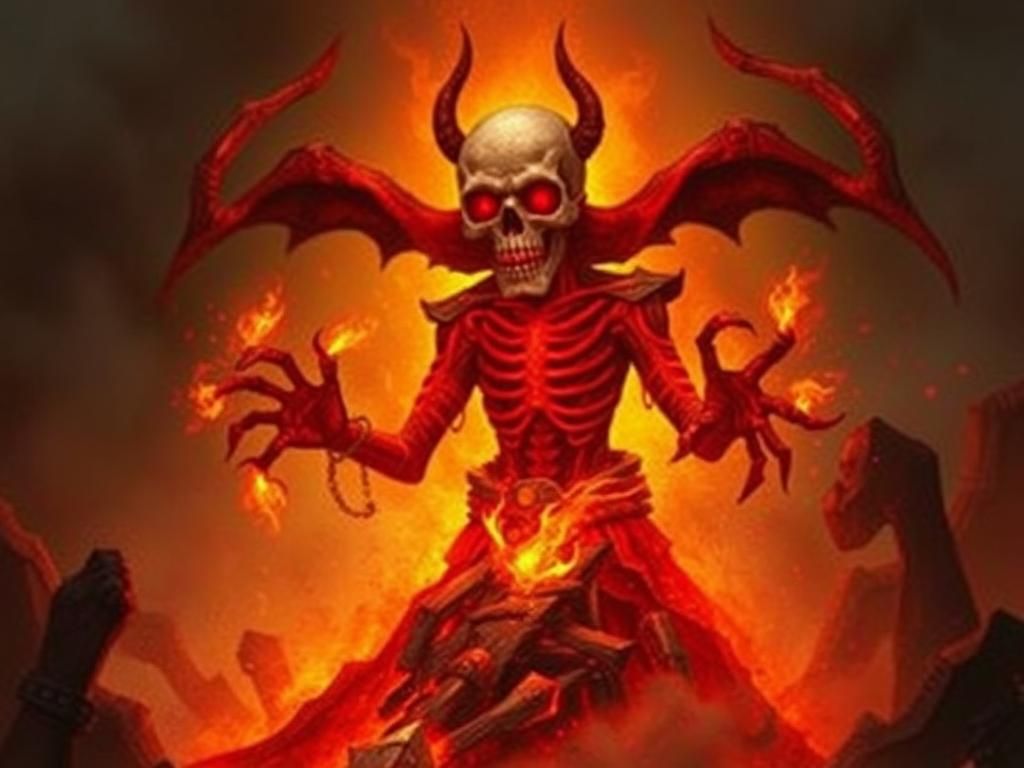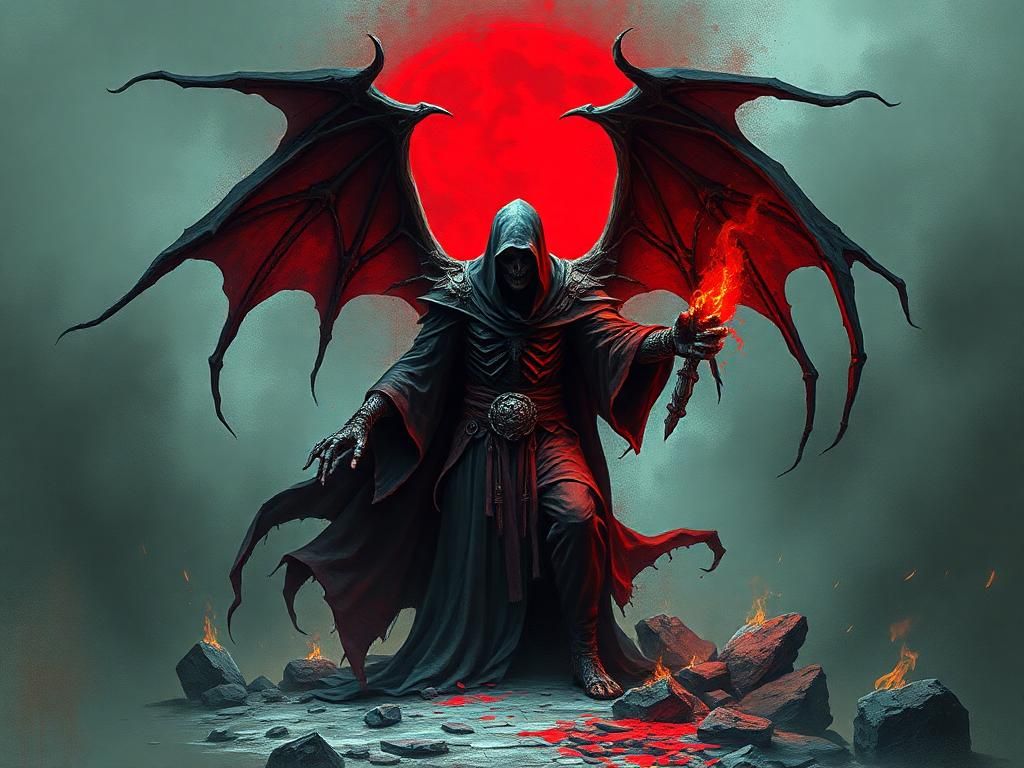The term catastrophic necromancer evokes powerful imagery and narratives in both fiction and mythology, often representing a character who wields dark powers over life and death. A necromancer, in various contexts, refers to a practitioner of necromancy—an ancient practice focused on communicating with the dead or harnessing grave powers for both benevolent and malevolent purposes. The word “catastrophic” in this context amplifies the traditional portrayal of necromancers, suggesting their abilities lead not only to personal triumphs but also to overwhelming disasters that affect entire realms or societies.
This article seeks to delve into the concept of the catastrophic necromancer across different mediums, exploring their historical roots, defining characteristics, and their depiction in modern popular culture. We will also discuss the significant thematic elements associated with these characters and the ethical considerations surrounding necromancy, all while analyzing notable case studies within literature, film, and gaming.
Historical Context of Necromancy
Origins of Necromancy
Necromancy has a storied past that extends back to ancient civilizations. In Ancient Egypt, belief in the afterlife led to the practice of rituals aimed at communicating with the deceased, with the Book of the Dead serving as a guide for souls transitioning to the other side. Similarly, in Ancient Greece, necromancers were often depicted as individuals who could summon the spirits of the dead, particularly in the epic tales of Homer. These ancient practices reflect the cultural significance of necromancers, who served as bridges between the living and the deceased.
Evolution of Necromancy in Literature
As societies progressed, the depiction of necromancers evolved within literature. Early texts such as the Old Testament contained references to individuals who sought to contact the dead, while medieval literature often portrayed necromancers as villains capable of invoking dark magic. The shift towards fantasy narratives in the 19th and 20th centuries ushered in a more complex portrayal of necromancers, where they became both tragic figures and formidable foes.
Characteristics of a Catastrophic Necromancer
Defining Traits
The catastrophic necromancer boasts several defining traits that set them apart from regular practitioners of necromancy. Their primary abilities often include controlling the dead, utilizing dark magic, and casting devastating curses. This power, however, usually exists alongside a moral ambiguity that complicates their portrayal. Are they misunderstood villains seeking knowledge beyond mortality, or are they pure embodiments of evil?
Psychological Profile
The motivations behind a catastrophic necromancer’s actions often stem from profound desires such as power, revenge, or intense loneliness. Thus, their psychological profile reveals a need for control and an unyielding quest for significance that signifies a marked impact on their mental health and moral compass. Characters may become obsessed with the ability to manipulate life and death, leading them down a path of increasing isolation and despair.
Representation in Popular Culture
Literature
In literature, the catastrophic necromancer offers rich thematic material. Classic examples can be seen in Mary Shelley’s “Frankenstein”, where Victor Frankenstein illustrates the peril of unchecked ambition. Modern fantasy novels continue this trend with authors like Brandon Sanderson and Jim Butcher, who have crafted characters that question the dichotomies of good and evil through their necromantic abilities.
Film and Television
Horror films have long held a fascination for necromancy, with iconic portrayals such as those found in “The Evil Dead” and “Hocus Pocus”. These films delve into the chaos and havoc that catastrophic necromancy can unleash. Television series like “Chilling Adventures of Sabrina” further explore the darker themes associated with such characters, making necromancers a staple in modern storytelling.

Video Games
The realm of gaming has also embraced the concept of the catastrophic necromancer, with prominent examples found in franchises such as the “Diablo” series and “World of Warcraft”. In these games, necromancers often possess unique gameplay mechanics that allow players to raise armies and wield dark powers, thrusting them into high-stakes conflicts that resonate deeply with themes of mortality and consequences.
Thematic Elements of Catastrophic Necromancy
The Conflict Between Life and Death
At the core of the catastrophic necromancer theme lies the conflict between life and death. These characters navigate the delicate boundaries that separate the two realms, often symbolizing the struggle between resurrection and decay. The act of raising the dead raises questions about the sanctity of life and the inevitable decay that follows.
The Consequences of Necromantic Power
The immense power granted to a necromancer often leads to unintended chaos and destruction, serving as a stark reminder of the moral implications that accompany defying natural laws. As catastrophic events unfold from necromantic practices, the stories serve as cautionary tales about the price of ambition and the potential devastation that can follow such hubris.
Redemption and Redemption Arcs
Despite their dark origins, there exists the potential for redemption among catastrophic necromancers. Some stories delve into their journey towards change, presenting narratives where characters confront their pasts and seek to make amends. This exploration allows for a dynamic characterization, often resulting in profound emotional arcs that resonate with audiences.
Case Studies of Catastrophic Necromancers
Fictional Characters
Notable examples of catastrophic necromancers abound in popular culture. Character analyses reveal the complexity these figures carry. For instance, Lord Voldemort from the “Harry Potter” series embodies a catastrophic necromancer who seeks immortality through dark rituals, only to unleash chaos in the wizarding world. Alternatively, the Lich King from the “Warcraft” universe represents the apotheosis of necromantic power gone awry, demonstrating the devastating consequences of unmitigated ambition.
Their Impact on Narratives
These catastrophic necromancers drive key plot developments, often serving as catalysts for major conflicts within their narratives. Their presence tests the limits of both protagonists and societies, establishing a balance of power that keeps audiences engaged and invested in the unfolding story.
Ethical Considerations in Necromancy
Moral Dilemmas
The practice of necromancy brings forth numerous moral dilemmas. Is it ethical to resurrect the dead, or does such an act play God with the natural order? These questions allow readers and viewers to ponder the ramifications of defying mortality, tipping the balance between right and wrong.

Societal Impacts
The perception of necromancy varies widely across cultures, affecting societal norms and beliefs. In some societies, necromancy may be viewed as an abomination, leading to legal repercussions for those who attempt to practice it. In contrast, others might esteem it as a sacred practice, honored through respectful rituals.
Summary Table: Characteristics of Catastrophic Necromancers
| Characteristic | Description | Examples |
|---|---|---|
| Abilities | Controlling the dead, dark magic, curses | Lord Voldemort, The Lich King |
| Moral Ambiguity | Struggles between good and evil | Victor Frankenstein, Dorian Gray |
| Psychological Issues | Obsession with power, loneliness | Various characters from horror fiction |
| Thematic Elements | Life vs. death, chaos, redemption | Theme in multiple fantasy narratives |
FAQs About Catastrophic Necromancers
What is a catastrophic necromancer?
A catastrophic necromancer refers to a character who wields dark powers to control the dead, often leading to disastrous consequences in their narratives.
Are all necromancers evil?
Not necessarily; while many portrayals emphasize their moral ambiguity, some necromancers can be complex characters seeking to use their powers for good or personal reasons.
How are necromancers portrayed in video games?
In video games, necromancers often possess unique abilities, allowing players to raise undead forces while navigating themes of death and power.
What are the ethical implications of necromancy?
The ethical implications include questions about the morality of resurrecting the dead and the potential societal repercussions of such acts.
Can necromancers be redeemed in stories?
Yes, many narratives explore redemption arcs for necromancers, highlighting their struggles and potential for growth beyond their dark pasts.
How has necromancy evolved in literature?
Necromancy has shifted from ancient practices to complex representations in modern literature, where it often serves as a metaphor for ambition and the natural order.
What cultural significance does necromancy have?
Cultural significance varies widely, with some societies viewing it as sacred or honorable while others see it as taboo or dangerous.
What examples of catastrophic necromancers exist in classic literature?
Notable examples include Victor Frankenstein from Mary Shelley’s “Frankenstein,” who embodies the tragic consequences of playing God.
Are there real-life historical practices related to necromancy?
Yes, historical cultures, such as the Ancient Egyptians and Greeks, practiced rituals aiming at communicating with the dead or seeking their guidance.
Why do necromancers fascinate audiences?
Audiences are drawn to necromancers due to their complex connections to mortality, morality, and the human experience’s darker themes, providing a compelling basis for character exploration.
Further Reading and Recommendations
For those interested in exploring the world of necromancers further, consider reading the following works:
– “The Name of the Wind” by Patrick Rothfuss
– “The Bone Season” by Samantha Shannon
– Watch films such as “The Sixth Sense” and “Pet Sematary”
– Play video games like “Hades” or “Dark Souls” for intricate representations of necromantic themes.
References
1. Grieve, R. (2015). “The Cultural History of Necromancy.” *Journal of Folklore Studies*.
2. McGowan, J. (2020). “The Evolution of Necromancy in Fantasy Literature.” *Fantasy Studies Review*.
3. Bane, T. (2018). “Ethics of Resurrection: A Philosophical Inquiry.” *Philosophical Queries*.
4. “Necromancy in Ancient Civilizations.” (n.d.) *Encyclopedia of Ancient History*. [Ancient History Encyclopedia](https://www.ancient.eu)